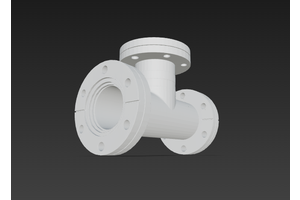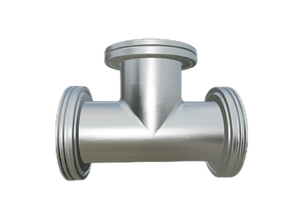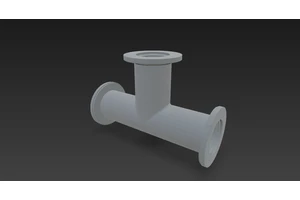Types of Dry Vacuum Pumps in Semiconductor Manufacturing: A Comparative Analysis
Dry vacuum pumps play a critical role in semiconductor manufacturing, where clean, oil-free environments are essential for high-precision processes. Over the past decade, advancements in mechanical design have led to the development of several dry vacuum pump types, each with unique advantages and limitations. This article explores the key categories of dry vacuum pumps used in semiconductor applications and provides guidance for selecting the most suitable design based on process requirements.
1. Introduction
Dry vacuum pumps are engineered to eliminate oil contamination, making them ideal for sensitive semiconductor processes. These pumps are broadly classified into two categories: multi-stage pumps (e.g., vane, claw, and combi-type) and single-stage pumps (e.g., screw-type).
- Multi-stage pumps rely on multiple vacuum chambers to compress gas incrementally, achieving high vacuum levels but requiring precise control of gaps and nitrogen dilution.
- Single-stage pumps, such as screw-type designs, use a single chamber for compression, offering simplicity and reduced energy consumption in certain applications.
Understanding the operational characteristics of each type is crucial for optimizing performance in semiconductor processes like deposition, etching, and lithography.
2. Types of Dry Vacuum Pumps
2.1 Dual Vane-Type Pumps
Design: Similar to Roots pumps, dual vane-type pumps use two rotating vanes to create a multi-stage compression system.
Key Features:
- High internal compression ratios reduce energy consumption.
- Nitrogen dilution is required at each stage to isolate and dilute process gases, minimizing contamination risks.
- Complex gas pathways increase maintenance demands due to tight tolerances between stages.
Applications: Suitable for processes requiring moderate vacuum levels, such as load-lock chambers in deposition systems.
2.2 Triple Vane-Type Pumps
Design: An evolution of the dual vane design, triple vane pumps divide gas into three portions per rotation instead of two.
Key Features:
- Improved efficiency over dual vane pumps, with reduced energy consumption.
- Two DC motors may be used to enhance torque during startup, though this can slightly reduce re-start reliability.
- Nitrogen dilution remains necessary for gas isolation in multi-stage operations.
Applications: Ideal for high-throughput semiconductor processes where energy efficiency is prioritized.
2.3 Combi-Type (Roots + Claw) Pumps
Design: Combines Roots and claw rotors to optimize performance across pressure ranges.
Key Features:
- Roots rotors excel at low-pressure stages, while claw rotors handle high-pressure gas intake.
- Gas pathways mirror those of vane-type pumps, with nitrogen dilution required for isolation.
- Some models incorporate star-shaped rotors in the final stage to further divide gas into five portions, enhancing efficiency.
Applications: Commonly used in chemical vapor deposition (CVD) and etching processes requiring stable vacuum levels.
2.4 External Compression Screw-Type Pumps
Design: Utilizes a pair of equally spaced screws to minimize internal compression.
Key Features:
- Shortest gas pathway ensures minimal gas retention time, reducing chemical reactions or condensation risks.
- Low nitrogen consumption makes these pumps suitable for clean processes, such as wafer cleaning or dry etching.
- Higher energy consumption compared to internal compression designs, but offers superior stability in complex processes.
Applications: Preferred for high-purity semiconductor manufacturing where gas purity is critical.
2.5 Internal Compression Screw-Type Pumps
Design: Features non-equally spaced screws that create internal compression within the chamber.
Key Features:
- Reduced energy consumption comparable to multi-stage pumps due to internal compression.
- Risk of gas phase changes (e.g., condensation or solidification) in processes involving reactive or condensable gases.
- Fewer parts (60% fewer than multi-stage pumps) enhance long-term reliability and reduce maintenance costs.
Applications: Well-suited for deposition processes where energy efficiency is a priority.
3. Trends and Selection Criteria
3.1 Miniaturization vs. Performance
- Compact designs are in demand, but smaller pumps require higher rotational speeds (via variable frequency drives or gearboxes) to maintain equivalent pumping rates.
- Variable frequency drives offer closed-loop control but may reduce torque under heavy loads. Gearbox adjustments provide cost-effective solutions but limit speed flexibility.
3.2 Cost and Stability Considerations
- Energy consumption and nitrogen usage are primary cost drivers. Internal compression screw pumps minimize energy use but require careful management of gas reactions.
- Process flexibility is critical for handling diverse semiconductor applications. External compression screw pumps are ideal for universal use due to low nitrogen dependency.
3.3 Future Outlook
- Environmental regulations are pushing for reduced nitrogen consumption, favoring external compression designs.
- Single-stage screw pumps are gaining traction due to their simplified maintenance and long-term cost savings.
4. Conclusion
Selecting the optimal dry vacuum pump for semiconductor manufacturing depends on balancing energy efficiency, gas purity requirements, and process flexibility. While multi-stage pumps (vane, claw, combi-types) remain reliable for high-vacuum applications, single-stage screw pumps are increasingly preferred for their stability and ease of maintenance. As semiconductor processes evolve toward higher precision and cleaner environments, advancements in dry vacuum pump technology will continue to drive innovation in the industry.
For manufacturers, prioritizing stability and cost-effectiveness—rather than solely focusing on initial purchase price—will ensure long-term success in competitive semiconductor production.
This guide provides a comprehensive overview of dry vacuum pump types and their suitability for semiconductor applications, helping engineers and procurement teams make informed decisions.





